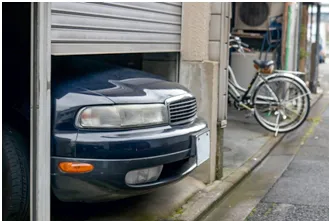Why Can’t You Breathe Properly at Night?
Diana is sure her brother Robbie loves her dearly . . . or at least he does NOW. But when he challenged 8-year old Diana to ‘The Great Snorkeling Competition,’
she should have known to suspect he was up to mischief. As they sunk below the surface of the pool, Robbie managed to breathe effortlessly into his snorkel. Diana, on the other hand, was struggling to pull the air through the snorkel and into her lungs. “Why is this so difficult for me?” she thought. Her brain was telling her body to resurface NOW…and so, despite her best efforts, Robbie won by a landslide. Diana licked her wounded ego and vowed never to snorkel again—after all they were underwater choking hazards!
Little did Diana know that Robbie, like most big brothers, had rigged the challenge…and given Diana a half-pinched-off snorkel! Her lifeline had been compromised from the start.
When we go to sleep at night our brains have the important job of maintaining our lifelines. If our ‘snorkels’ or airways become compromised it will affect how well we rest. But HOW do our airways get blocked?
What keeps the air from getting into our lungs?
It depends! We’ll start by assuming your older mischievous siblings have nothing to do with it! The point or points of blockage may be different for each person. Let’s go through these from the top to bottom

1- The Brain

Our brain may stop telling our body to breathe. This looks like long pauses in
breathing without ANY effort by the chest and belly to pull air in and is called central sleep apnea. It is not really a physical blockage, BUT it does result in the same decreased oxygen to the brain.
2- The Nose
Have you ever noticed how hard it is to sleep when you have a stuffed-up nose?

The nose is ideally where we pull the air from the outside world into our body. It acts as both a filter and a moisturizer for the air. If our nose is plugged up, we will have less volume of air coming into the lungs…which means less oxygen to the brain. Some of the common reasons our nose becomes clogged include: chronic allergies, polyps (or outgrowths within the nose as described in Chapter 1), deviated septum (the wall separating the right and left side of the nose is bent, also described in Chapter 1), or the sides of the nose may collapse inward when you inhale.
3- The Mouth

Our mouths house a lot of soft stuff that, once relaxed, can fall back into our airway during sleep. Some of these structures include: the tongue, the soft palate (the soft
ceiling behind your back teeth), and the dangling uvula we all know from the opera-singing cartoons.
What makes these tissues slump backwards? Gravity! When we begin deep sleep, the muscles in our body relax so that we don’t act out our dreams. Gravity then goes to work, especially when we sleep on our back, pulling the soft tissues towards our throat and limiting our airway.
If you snore, this is where all that noise comes from! The soft tissues vibrate as the air is being forced between these floppy tissues. Both the condition and size of these tissues can also affect their tendency to cause a blockage. For example, if these tissues are BIGGER due to fat deposits or inflammation, they already take up more of the 10 airspace. Or, if these tissues lack tone (meaning they don’t hold their structure while relaxed) they will fall inwards more easily as well.
What about the teeth and jaws? Let’s imagine that the teeth and jaws are a garage and the tongue is the car. If the teeth are crowded and the jaws are narrowed, like a compact-sized car space and the tongue is a full-sized SUV, then we are going to struggle to keep the tongue out of the airway. This is important to recognize ASAP, especially in children, because we may be able to up-size the garage space to make breathing easier! More on how this is done later!

4- The Throat

Our throat is the main pipe through which all this air will travel to reach the
lungs. This may be blocked by everything upstream (the nose and mouth) OR by other structures located along this tube. Big adenoids and tonsils are a common suspect, especially in children.
These tissues tend to enlarge in response to inflammation from three issues:
1. Chronic environmental and food allergies… like grasses, dust, dairy and wheat.
2. Snoring… the chronic vibration causes the tissues to become swollen.
3. Mouth breathing… air breathed in through the mouth is not filtered, warmed or moisturized by our nose, so it tends to irritate and dry out all the soft tissues downstream in the throat and the tubes leading to the lungs and then the lungs
themselves (see Asthma in Chapter 9).
Short-term conditions like sickness may also cause the tonsils and adenoids to get bigger as the body is fighting off the illness.
Wow, that’s a lot of ways our ‘snorkels’ can get clogged!
You can see why it is SO important to find out WHERE the obstruction is for YOU!
Our team of brain, nose, mouth and throat experts are ready to help guide you on your journey towards your BEST night’s rest.
